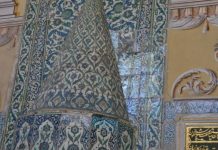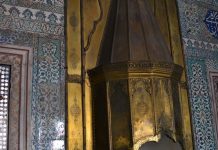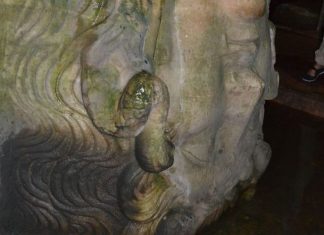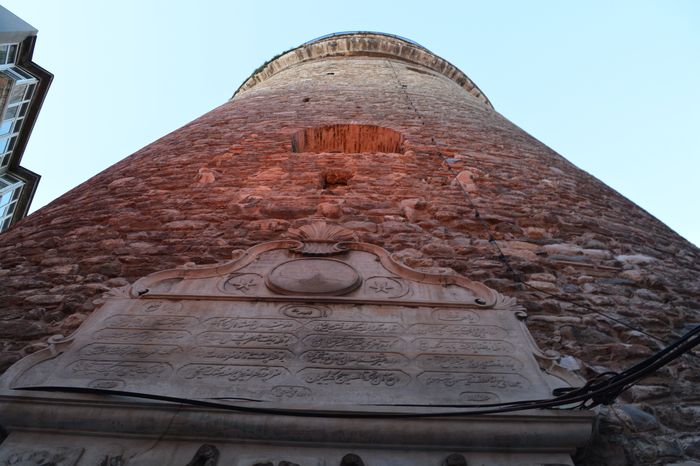Soldiers raised Odoacer up on a shield, in the military way of declaring rulership, and then he led his troops through northern Italy against Orestes. Seen through Italian eyes, he comes across as a revolutionary, grasping at power by any means, seizing Pavia and inspiring all the usual poetry about a city under assault, cliches as old as Homer. Once Orestes retreated and Odoacer’s men hounded him down and killed him south of Pavia at Piacenza, the violence ended quickly. Within two weeks of Odoacer’s coup, Orestes was dead and his brother Paulus had been similarly killed in Ravenna. The emperor that Orestes had advanced, Romulus, was deposed and placed under elegant house arrest near Naples, where he lived unharmed for decades, probably in close proximity to Eugippius and the monks who venerated Severinus.
Constantinople with the traditional insignia
Odoacer went on to behave in as natural and Roman a way as one could expect. He sent ambassadors to Constantinople with the traditional insignia and badges of office that had been, in some form, in the city of Rome since the founding of the empire. “You are,” he argued to Zeno, “emperor enough for me.” By returning the insignia, he made the case that he was a loyal servant of empire—but not one who would put up with any emperors in his vicinity.
Zeno saw opportunity, as he would see it again a few years later when he sent Theoderic to supplant Odoacer, and so for now he accepted the offer. Zeno conferred on Odoacer the highest title in his gift, patricius, and henceforth Odoacer seems to have added the imperial prefix Flavius to his name (we have coins minted for “Fl. Odoacer”). Zeno encouraged Odoacer to direct his nominal allegiance to another imperial claimant, Julius Nepos, then still hanging on by his fingernails to a scrap of authority in the Balkans. No one recorded Odoacer’s response, but when Nepos died shortly afterward, Zeno was the only emperor in all the Roman realms private bulgaria tours yachting.
What was Odoacer? In Roman governmental eyes, he was patricius (patrician) and representative of the emperor. In military eyes he was rex (king), but we shouldn’t make him a barbarian king without clearly under-standing the different kinds of lordship he exercised: rex Torcilingorum, rex Torcilingorum Rogorumque, rex Gothorum—all names of groups of soldiers and their families that offered allegiance to this Roman ruler. In one way or another, Odoacer managed to be associated with or claimed by at least half a dozen such groups in his career, but from the time he came to Italy, the Roman ones predominated.
Odoacer ruled from Rome and from Ravenna and, setting a pattern followed and exceeded by Theoderic, paid careful attention to the senatorial class in Rome, by now a shrinking number of families with an inflated sense of their own preeiminence. Odoacer’s restoration of the Colosseum and his assignment of seats to senatorial dignitaries, as we saw, were probably the most visible of his tactics to consolidate power and aggrandize himself as a Roman of Rome. There isn’t much eventful narrative of Odoacer’s reign left to us, and so we tend to minimize his achievements, but he did win back Sicily from the Vandals and extended his control into Nori- cum and Dalmatia north and east of the Italian peninsula. For the first time since Aetius twenty years earlier, a resident of the peninsula could feel that control, dignity, and Roman prosperity were in the land again Well enough to strike up an acquaintance.
Theoderic’s successes
And then Theoderic. Theoderic’s successes were greater than Odoacer’s, his reign lasted twice as long, and (most important and most misleading for history) he appears in abundant documents of many kinds. He made sure we had the wherewithal to tell his story, as I have already been telling it, and in this he was very shrewd and very Roman.
We have returned now to the year 500, a midpoint in a rare and privileged moment of history, when two strong, successful rulers, neither of them a saint but neither more vicious than most, ruled in succession for a combined fifty years between them. The long fourth century that lasted from the accession of Diocletian in 284 to the murder of Stilicho in 408 represented a better time, but that epoch followed a short third century (from the death of Alexander Severus in 235 to Diocletian’s accession) that had been every bit as abysmal as the fifth century. After Theoderic’s death in 526 and the murder of his daughter in 535, Italy as a whole would know no comparable unity, prosperity, and freedom from warfare until the 1950s. We concentrate, inevitably, on Theoderic’s years, but Odoacer deserves praise as well, and our remembrance as one of the noblest Romans.








